By Erin Hodgson and Ashley Dean
Adult alfalfa weevils become active and start laying eggs as soon as temperatures exceed 48°F. Like other insects, the development of alfalfa weevil depends on temperature and we can rely on the accumulation of growing degree days (GDD) to predict activity. Alfalfa weevil egg hatching begins when 200-300 degree days have accumulated since January 1.
Based on accumulated temperatures since January, alfalfa weevils may be active in much of the state (Figure 1). Some areas in northern Iowa have lower GDD accumulation and may not see activity yet. In Iowa, fields south of Interstate 80 should be scouted beginning at 200 GDD and fields north of Interstate 80 should be scouted beginning at 250 GDD.
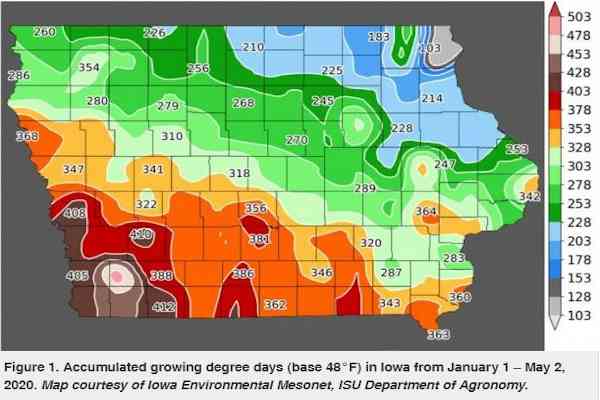
Biology
Alfalfa weevil is an important defoliating pest in alfalfa. Heavy infestations can reduce tonnage and forage quality. Alfalfa weevil larvae typically cause the majority of plant injury. Newly hatched larvae can be found feeding on terminal leaves, leaving newly expanded leaves skeletonized. Maturing larvae (Photo 1) move down the plant and begin feeding between leaf veins. Peak larval activity occurs around 575 GDD. Silken pupal cases are often attached to leaves in the lower canopy or in leaf litter.
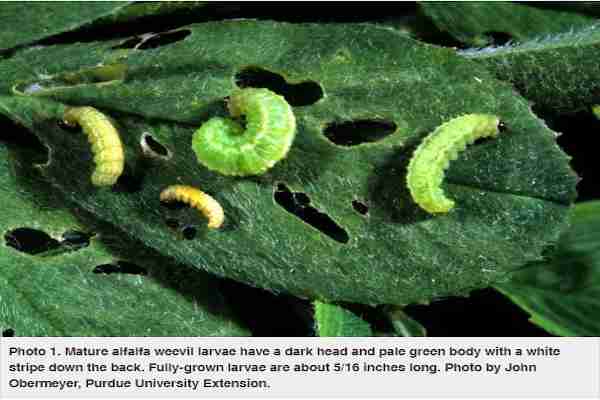
The time it takes to reach the adult stage is dependent on temperature but is usually around eight weeks. Adults (Photo 2) cause less plant injury than larvae. They feed along the leaf margin, leaving irregular notches. Female alfalfa weevils can lay 800-4,000 eggs in a lifetime and insert 5-20 at a time into alfalfa stems. A heavily infested field will look frosted or silver (Photo 3).
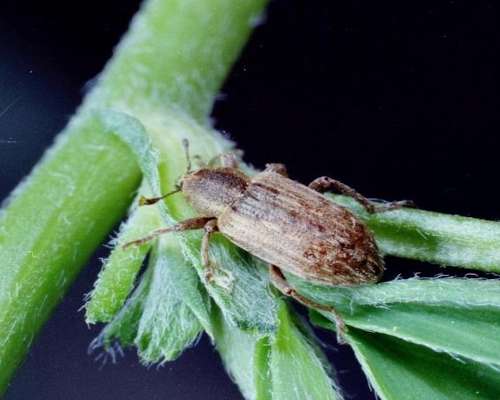
Photo 2. Alfalfa weevil adults have an elongated snout and elbowed antennae. Their wings and body are mottled or brown. Photo by Clemson University – USDA Cooperative Extension Slide Series, Bugwood.org.
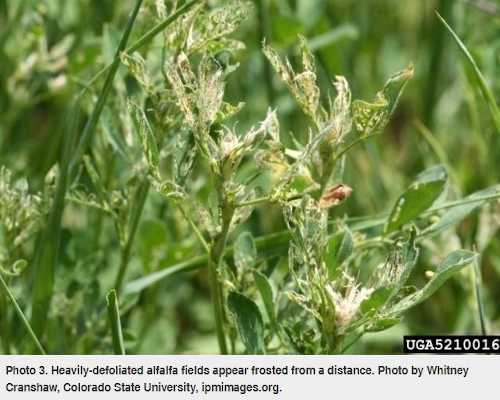
Scouting and Management
After reaching benchmark GDD (200 in southern Iowa and 250 in northern Iowa), use a sweep net to sample for the presence of adults and larvae. South-facing slopes warm up faster and may be a place to start sampling. Once the presence of larvae is confirmed, collect six alfalfa stems from five locations throughout the field (total of 30 stems) and measure plant height. Take each stem and vigorously shake into a bucket to dislodge larvae. Small larvae can be difficult to separate from the plant and therefore careful plant inspection is also needed. Average the number of larvae per 30 stems and plant height to determine if the economic threshold (ET) is approaching (Table 1).
Cutting alfalfa is an effective management tool for alfalfa weevil larvae, and an insecticide application may be avoided if harvesting occurs within a few days of reaching the economic threshold. If harvesting alfalfa is inappropriate at the time the ET is reached, an insecticide application may be necessary. Take note of the pre-harvest interval when applying insecticides for alfalfa weevil.
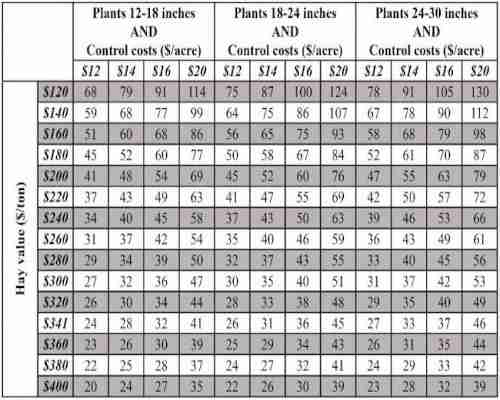
Source : iastate.edu